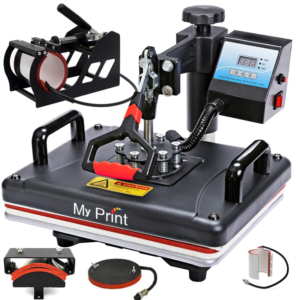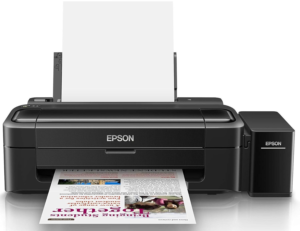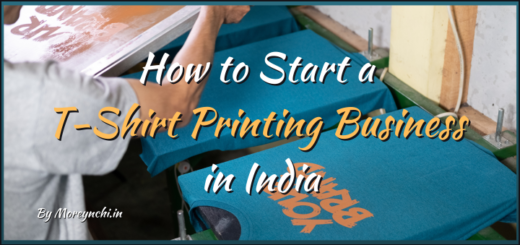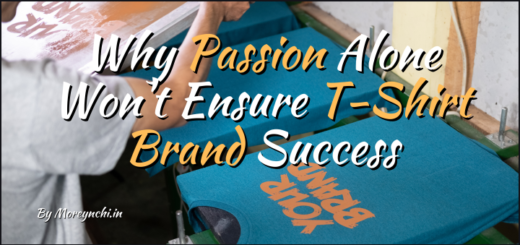Revealed! The Truth about Sublimation Printing vs DTF Printing in 2024 – Prepare to Be Amazed!
DTF (Direct To Film) printing and Sublimation printing are two distinct methods used for transferring designs onto various substrates. While both techniques have their advantages and specific use cases, it is essential to understand the differences between them to make an informed decision. In this article, we will compare DTF printing and sublimation printing based on various factors such as printing processes, fabric compatibility, color vibrancy, durability, design capabilities, and application areas. We will also explore the quality of print, cost-effectiveness, and their suitability for the Indian market.

Table of Contents – Sublimation vs DTF
DTF Printing: A Closer Look
What is DTF Printing?
DTF printing is a unique technique that involves printing images directly onto a film using specialized inkjet printers. Unlike other methods, DTF printing does not use ink-absorbent paper. Instead, a PET sheet (polyethylene terephthalate) is used for printing. After printing the design on the sheet, it is coated with adhesive powder and then cured. Finally, the design is transferred to the substrate using a heat press. DTF printing requires a special DTF printer, a curing oven, white ink, CMYK inks, PET sheets, and other essential supplies.
Advantages of DTF Printing
DTF printing offers several advantages. Firstly, it allows for the printing of white as well as CMYK color combinations, resulting in detailed and vibrant prints. The colors appear almost identical to the input design, making DTF printing suitable for producing eye-catching and vivid designs. Additionally, DTF printing is compatible with various substrates, including synthetic fibers, natural fibers, wood, metal, and fiberglass. Unlike sublimation printing, the color of the substrate does not affect the printing outcome in DTF printing.
Limitations of DTF Printing
DTF printing does have some limitations. The design does not chemically bond with the substrate but rather sits on top of it, making it feel like a layer. As a result, the design may slowly crack and peel off after multiple washes, reducing its longevity. Despite these limitations, DTF printing is an excellent option if you want to achieve high-quality, detailed designs on any type of substrate.
Also Read,
Acer Nitro 5 Gaming Laptop: Supercharge Your Gaming Experience
Sublimation Printing: A Closer Look
What is Sublimation Printing?
Sublimation printing is a digital printing technology that uses full-color artworks. The process involves printing the design onto sublimation paper using a sublimation printer and then transferring the pattern to clothing or items made of polyester and polymer coatings with the help of a heat press machine. Sublimation printing is commonly used for decorative clothes, logos, banners, and various small items like pillows, plaques, and coffee cups.
Advantages of Sublimation Printing
Sublimation printing offers its own set of advantages. Firstly, it produces photo-realistic designs that bind with the fabric, resulting in vibrant and long-lasting prints. The colors do not fade quickly, even after multiple washes, and there is no risk of the design peeling off the material. Sublimation printing is also relatively cost-effective, with affordable sublimation printers, ink, and paper available in the market. It is widely used in the apparel customization industry, especially for light-colored designs.
Limitations of Sublimation Printing
Sublimation printing has some limitations to consider. The colors may not pop as well as expected, and the choice of substrate color is limited as sublimation can only be used on light-colored materials. Additionally, sublimation printing does not allow for the printing of white color. Although there are workarounds like using sublimation spray or laminate sheets, the choice of materials for sublimation printing is relatively small compared to DTF printing.
Comparing DTF Printing and Sublimation Printing
Required Equipment
For sublimation printing, you will need a sublimation printer or an inkjet printer converted into a sublimation printer, sublimation paper, ink, and a heat press machine. Additional items like Teflon sheets, butcher paper, scissors, and heat-resistant tape may also be required.
DTF printing requires a special DTF printer, curing oven, white ink, CMYK inks, PET sheets, adhesive powder, and a heat press machine. The startup cost for DTF printing is significantly higher compared to sublimation printing.
Maximize your business options more so by purchasing sublimation ink, a heat press and a printer all in one since it’s all you need to start producing quality personalized merchandise right away enhancing your brand!
Startup Cost
Sublimation printing is a more affordable option, with entry-level sublimation printers available for around ₹30,000/-. Converting an inkjet printer to a sublimation printer can further reduce the upfront cost, around ₹10,000/-. The cost of sublimation ink and paper is also relatively inexpensive.
In contrast, DTF printing requires a substantial initial investment. A brand-new DTF printer can start from ₹2,50,000/-, and the curing oven can range from ₹15,000/-. Additionally, CMYK and white inks, PET sheets, adhesive powder, and other supplies add to the overall startup cost. DTF printing is approximately eight times more expensive than sublimation printing.
Print Quality
Sublimation printing produces photo-realistic designs that bind with the fabric, resulting in long-lasting prints. The colors may not be as vibrant as in DTF printing, and the choice of substrate color is limited to light-colored materials. DTF printing, on the other hand, offers detailed and vibrant prints with the capability to print white as well as CMYK color combinations. The design does not chemically bond with the fabric and may crack and peel off after multiple washes.
Printing Process
Sublimation printing is a two-step process that involves printing the design on sublimation paper and then using a heat press machine to transfer it to the substrate. DTF printing, on the other hand, involves an additional step of applying adhesive powder to the back of the printed design on the PET sheet. The curing oven is then used to melt the powder before pressing the design onto the substrate with a heat press machine.
Fabric Compatibility
Sublimation printing favors polyester and synthetic fibers as substrates. Natural fibers and other materials may require additional techniques like using a laminate sheet or sublimation spray. DTF printing works well with all types of materials, including synthetic fibers, natural fibers, wood, metal, and fiberglass. It offers more flexibility in terms of fabric compatibility.
Design Longevity
Sublimation designs have excellent longevity as the colors become part of the fabric, resulting in long-lasting prints. The design does not fade quickly, even after multiple washes, and there is no chance of peeling. DTF prints, however, may crack and peel off over time. If longevity is a priority, sublimation printing is the better option.
Design Limitations
DTF printing generally offers more vibrant and opaque colors, especially on darker fabrics. It can handle intricate patterns and designs with ease. Sublimation printing can match DTF printing in many aspects but may fall short when it comes to complex, highly-detailed patterns.
DTF Printing vs Sublimation Printing: Which is Suitable for the Indian Market?
The choice between DTF printing and sublimation printing in the Indian market depends on various factors. Sublimation printing is a cost-effective option with a lower upfront cost, making it suitable for starting an apparel customization business, especially for light-colored designs. It is also more environmentally friendly. Sublimation printing can be used on a wide range of polyester-based substrates.
DTF printing, although more expensive, offers the capability to print vibrant colors, including white, on any type of substrate. This makes it suitable for those looking to build a printing business and achieve high-quality designs. However, the process is time-consuming and requires a significant investment.
Considering the growing T-shirt printing market in India and its future aspects, both DTF printing and sublimation printing have their advantages and specific use cases. It is crucial to evaluate factors such as quality of print, cost-effectiveness, fabric compatibility, and design capabilities before making a decision.
Final Words
In conclusion, DTF printing and sublimation printing are two distinct printing methods, each with its own set of advantages and limitations. The choice between them depends on factors such as the desired quality of print, fabric compatibility, startup cost, and specific requirements of the Indian market. Careful consideration of these factors will help businesses in India make an informed decision when it comes to selecting the most suitable printing method.
Looking for a Printer and Heat Press for your T-Shirt Printing Business, we have already done research for you. You can go for the below printer and Heat Press and start your Clothing Brand.
Maximize your business options more so by purchasing sublimation ink, a heat press and a printer all in one since it’s all you need to start producing quality personalized merchandise right away enhancing your brand!
Stay Healthy, Stay Safe, Jai Hind!






